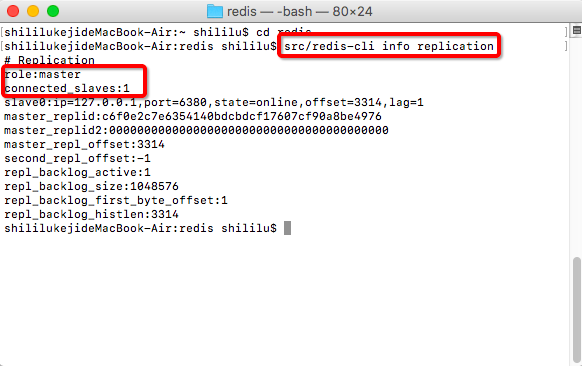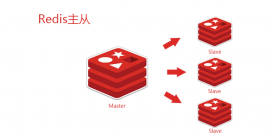在介紹了 Redis 流的基本功能之后, 現(xiàn)在是時(shí)候使用這些功能來構(gòu)建一些實(shí)際的應(yīng)用了。 消息隊(duì)列作為流的典型應(yīng)用之一, 具有非常好的示范性, 因此我們將使用 Redis 流的相關(guān)功能構(gòu)建一個(gè)消息隊(duì)列應(yīng)用, 這個(gè)消息隊(duì)列跟我們之前使用其他 Redis 數(shù)據(jù)結(jié)構(gòu)構(gòu)建的消息隊(duì)列具有相似的功能。
代碼清單 10-1 展示了一個(gè)具有基本功能的消息隊(duì)列實(shí)現(xiàn):
- 代碼最開頭的是幾個(gè)轉(zhuǎn)換函數(shù), 它們負(fù)責(zé)對程序的相關(guān)輸入輸出進(jìn)行轉(zhuǎn)換和格式化;
- MessageQueue 類用于實(shí)現(xiàn)消息隊(duì)列, 它的添加消息、移除消息以及返回消息數(shù)量三個(gè)方法分別使用了流的 XADD 命令、 XDEL 命令和 XLEN 命令;
- 消息隊(duì)列的兩個(gè)獲取方法 get_message() 和 get_by_range() 分別以兩種形式調(diào)用了流的 XRANGE 命令;
- 最后, 用于迭代消息的 iterate() 方法使用了 XREAD 命令對流進(jìn)行迭代。
代碼清單 10-1 使用 Redis 流實(shí)現(xiàn)的消息隊(duì)列: /stream/message_queue.py
|
1
2
3
4
5
6
7
8
9
10
11
12
13
14
15
16
17
18
19
20
21
22
23
24
25
26
27
28
29
30
31
32
33
34
35
36
37
38
39
40
41
42
43
44
45
46
47
48
49
50
51
52
53
54
55
56
57
58
59
60
61
62
63
64
65
|
def reconstruct_message_list(message_list): """ 為了讓多條消息能夠以更結(jié)構(gòu)化的方式返回給調(diào)用者, 將 Redis 返回的多條消息從原來的格式: [(id1, {k1:v1, k2:v2, ...}), (id2, {k1:v1, k2:v2, ...}), ...] 轉(zhuǎn)換成以下格式: [{id1: {k1:v1, k2:v2, ...}}, {id2: {k1:v1, k2:v2, ...}}, ...] """ result = [] for id, kvs in message_list: result.append({id: kvs}) return resultdef get_message_from_nested_list(lst): """ 從嵌套列表中取出消息本體。 """ return lst[0][1]class MessageQueue: """ 使用 Redis 流實(shí)現(xiàn)的消息隊(duì)列。 """ def __init__(self, client, stream_key): self.client = client self.stream = stream_key def add_message(self, key_value_pairs): """ 將給定的鍵值對存入到消息里面,并返回相應(yīng)的消息 ID 。 """ return self.client.xadd(self.stream, key_value_pairs) def get_message(self, message_id): """ 根據(jù)給定的消息 ID 返回相應(yīng)的消息,如果消息不存在則返回 None 。 """ reply = self.client.xrange(self.stream, message_id, message_id) if len(reply) == 1: return get_message_from_nested_list(reply) def remove_message(self, message_id): """ 根據(jù)給定的消息 ID 刪除相應(yīng)的消息,如果消息不存在則忽略該動(dòng)作。 """ self.client.xdel(self.stream, message_id) def len(self): """ 返回消息隊(duì)列的長度。 """ return self.client.xlen(self.stream) def get_by_range(self, start_id, end_id, max_item=10): """ 根據(jù)給定的 ID 區(qū)間范圍返回隊(duì)列中的消息。 """ reply = self.client.xrange(self.stream, start_id, end_id, max_item) return reconstruct_message_list(reply) def iterate(self, start_id=0, max_item=10): """ 對消息隊(duì)列進(jìn)行迭代,返回最多 N 條大于給定 ID 的消息。 """ reply = self.client.xread({self.stream: start_id}, max_item) if len(reply) == 0: return list() else: messages = get_message_from_nested_list(reply) return reconstruct_message_list(messages) |
對于這個(gè)消息隊(duì)列實(shí)現(xiàn), 我們可以通過執(zhí)行以下代碼, 創(chuàng)建出它的實(shí)例:
|
1
2
3
4
|
>>> from redis import Redis>>> from message_queue import MessageQueue>>> client = Redis(decode_responses=True)>>> mq = MessageQueue(client, "mq") |
然后通過執(zhí)行以下代碼, 向隊(duì)列里面添加十條消息:
|
1
2
3
4
5
6
7
8
9
10
11
12
13
14
15
16
|
>>> for i in range(10):... key = "key{0}".format(i)... value = "value{0}".format(i)... msg = {key:value}... mq.add_message(msg)...'1554113926280-0''1554113926280-1''1554113926281-0''1554113926281-1''1554113926281-2''1554113926281-3''1554113926281-4''1554113926281-5''1554113926281-6''1554113926282-0' |
還可以根據(jù) ID 獲取指定的消息, 又或者使用 get_by_range() 方法同時(shí)獲取多條消息:
|
1
2
3
4
5
6
|
>>> mq.get_message('1554113926280-0'){'key0': 'value0'}>>> mq.get_message('1554113926280-1'){'key1': 'value1'}>>> mq.get_by_range("-", "+", 3)[{'1554113926280-0': {'key0': 'value0'}}, {'1554113926280-1': {'key1': 'value1'}}, {'1554113926281-0': {'key2': 'value2'}}] |
又或者使用 iterate() 方法對消息隊(duì)列進(jìn)行迭代, 等等:
|
1
2
3
4
|
>>> mq.iterate(0, 3)[{'1554113926280-0': {'key0': 'value0'}}, {'1554113926280-1': {'key1': 'value1'}}, {'1554113926281-0': {'key2': 'value2'}}]>>> mq.iterate('1554113926281-0', 3)[{'1554113926281-1': {'key3': 'value3'}}, {'1554113926281-2': {'key4': 'value4'}}, {'1554113926281-3': {'key5': 'value5'}}] |
總結(jié)
以上所述是小編給大家介紹的使用 Redis 流實(shí)現(xiàn)消息隊(duì)列的代碼,希望對大家有所幫助,如果大家有任何疑問請給我留言,小編會(huì)及時(shí)回復(fù)大家的。在此也非常感謝大家對服務(wù)器之家網(wǎng)站的支持!
如果你覺得本文對你有幫助,歡迎轉(zhuǎn)載,煩請注明出處,謝謝!
原文鏈接:http://blog.huangz.me/2019/redis-message-queue.html















